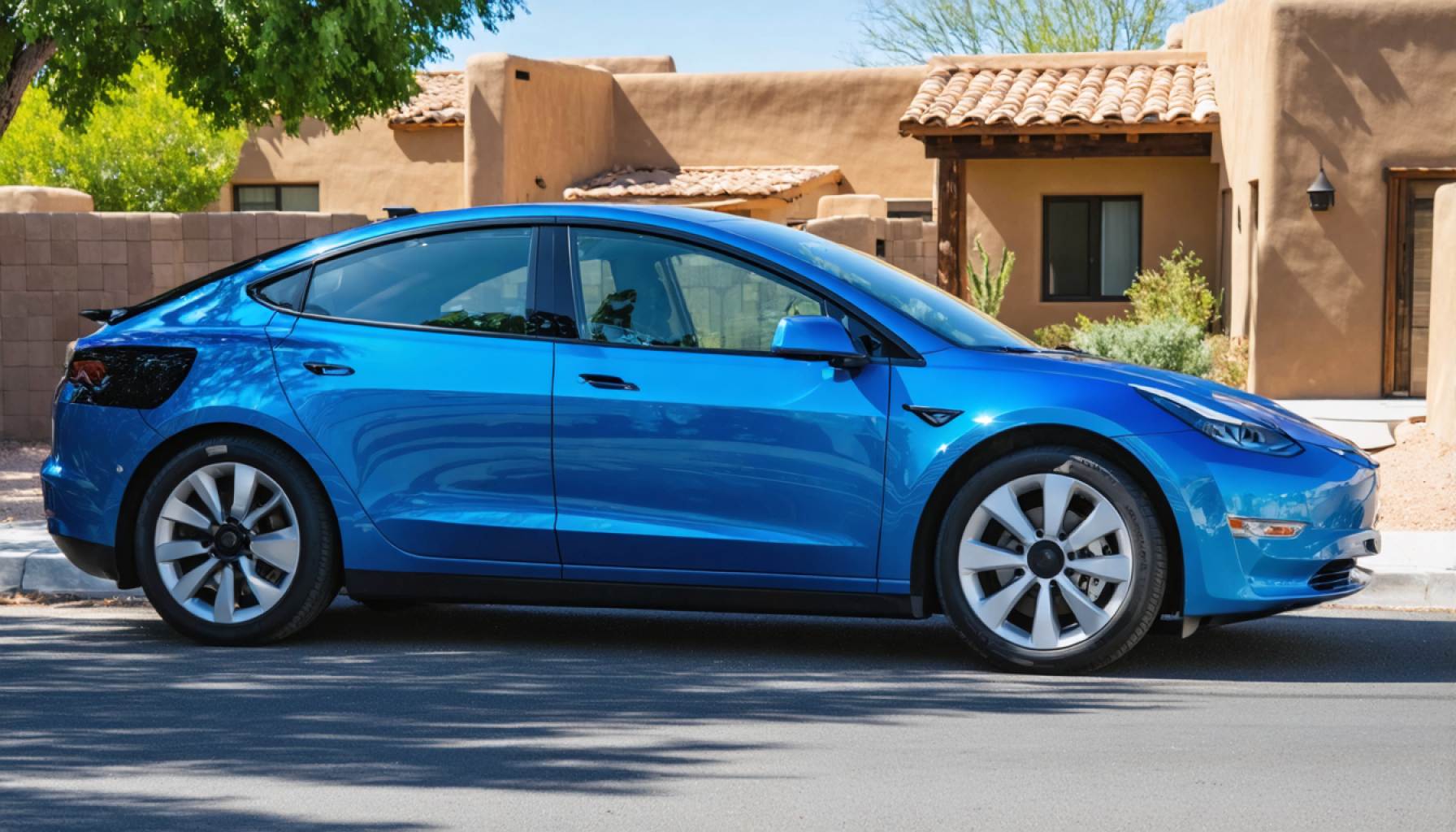- Camino de Jacobo and Valle Vista in Santa Fe become key sites in an electric vehicle revolution.
- Residents can access two Chevrolet Bolts at $5 an hour, promoting modern mobility and convenience.
- Initiative results from collaboration between Santa Fe County and the nonprofit Forth, aiding public transit gaps.
- Program part of a $10 million ride-share project spanning eight states, enhancing transportation accessibility.
- Electric vehicles offer more than transport: social inclusion, job opportunities, and sustainable living.
- The initiative embodies a shift towards environmental responsibility and community empowerment.
- Santa Fe’s project underscores the impact of community partnerships in driving sustainable progress.
In the sunlit heart of southern Santa Fe, a quiet yet revolutionary change hums to life. Two housing communities, Camino de Jacobo and Valle Vista, have become unlikely epicenters of an electric vehicle revolution, driven by the simple desire for connectivity and convenience.
Amid the Adobe hues and sprawling desert vistas, community residents are now empowered with an unprecedented opportunity: access to electric vehicles for a mere $5 an hour. Adorned with the sleek lines of two Chevrolet Bolts, the promise of modern mobility sits ready at charging stations, its presence a vivid testament to innovation and accessibility.
This transformative initiative, born from the collaboration between Santa Fe County and the forward-thinking nonprofit Forth, does more than just provide wheels. It’s a movement fueled by purpose. Forth, hailing from Oregon, brings a wealth of expertise in car-sharing, administering a groundbreaking $10 million ride-share project across eight states. With eyes set on the horizon, the program is poised to enhance public transit where gaps have long persisted.
For residents, these vehicles represent more than mere transportation. They promise social inclusion, newfound freedom, and the possibility of better job opportunities. It’s about breaking the chains of restricted mobility, once commonplace among those without personal vehicles in areas underserved by traditional public transit.
Each electric hum of the Chevy Bolt reverberates a message of sustainability—an environmental whisper that weaves through the fabric of the community, urging a shift towards greener living. In a world where climate consciousness is pivotal, these vehicles are not just cars but ambassadors of change.
As the sun sets against the rugged beauty of Santa Fe, it casts a golden glow on a community in motion. This endeavor rewrites not just routes but narratives, carving pathways to possibilities once deemed unreachable.
The takeaway is clear: When communities and forward-thinking partners join forces to bridge logistical divides, they spark a revolution that powers change not just today, but well into the future. In Santa Fe, the wheels of progress aren’t just turning—they’re charging forward, electric and unstoppable.
The Electric Vehicle Revolution in Santa Fe: How Two Communities are Leading the Way
Introduction
In the heart of southern Santa Fe, something remarkable is unfolding. Communities like Camino de Jacobo and Valle Vista are at the forefront of an electric vehicle (EV) revolution, offering residents the chance to drive electric for just $5 an hour. This transformative program, a collaboration between Santa Fe County and Forth, a nonprofit from Oregon, aims to enhance mobility and sustainability. But what’s fueling this movement, and how can similar initiatives be implemented elsewhere?
The Power of Accessibility and Connectivity
This initiative reflects a growing trend towards improving accessibility and connectivity in underserved areas. By providing affordable access to EVs, the program aims to bridge the transportation gap many residents face. Lack of reliable public transit can significantly limit job opportunities, social interactions, and overall quality of life. The program gives residents newfound mobility, which in turn can lead to economic and social empowerment.
How-To: Implement a Similar EV Program
For communities interested in replicating this model, here are actionable steps:
1. Assess Local Needs: Conduct surveys to understand the transportation gaps in your community.
2. Build Partnerships: Collaborate with nonprofits, local governments, and car companies to support the initiative.
3. Secure Funding: Seek grants and funding opportunities similar to the $10 million ride-share project Forth administers.
4. Focus on Sustainability: Partner with renewable energy providers to ensure the program’s environmental benefits.
Real-World Use Cases and Industry Trends
Similar projects have seen success in cities like Portland and Austin, where EV car-sharing initiatives have reduced traffic congestion and decreased carbon emissions. A report by BloombergNEF predicts that by 2040, over half of all new car sales will be electric, making investments in EV infrastructure crucial for urban planning.
Insights and Predictions for the EV Market
The integration of EVs into public transit systems represents a significant shift towards sustainable urban living. With global environmental awareness rising, the demand for EVs will continue to grow. As battery technology improves and costs decrease, initiatives like the one in Santa Fe will become more prevalent.
Pros and Cons Overview
Pros:
– Reduces reliance on fossil fuels.
– Increases mobility for underserved communities.
– Promotes environmental sustainability.
Cons:
– Initial implementation costs can be high.
– Requires ongoing infrastructure support for maintenance and charging stations.
– Dependence on government grants and funding.
Quick Tips for Residents
– Sign Up Early: Take advantage of introductory offers and incentives.
– Plan Trips Efficiently: Use the car-sharing app to check vehicle availability and plan your trips accordingly.
– Engage with the Community: Attend community meetings to provide feedback and suggestions for improvement.
Conclusion
Camino de Jacobo and Valle Vista exemplify the possibilities when community-driven initiatives meet sustainable technology. As more communities look to reduce their carbon footprint and enhance public transit options, programs like these will lead the charge. For more information on sustainability initiatives and innovative transportation models, visit Forth or Santa Fe County official websites.
In the era of climate consciousness, the integration of electric vehicles into daily life is no longer a distant vision but a present reality, sparking change one charge at a time.
